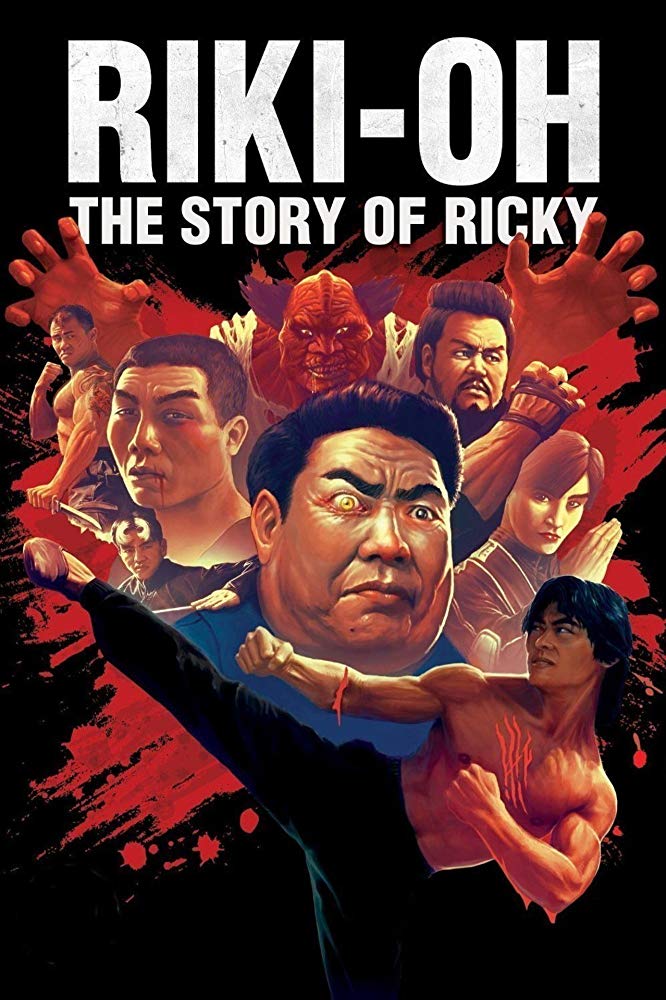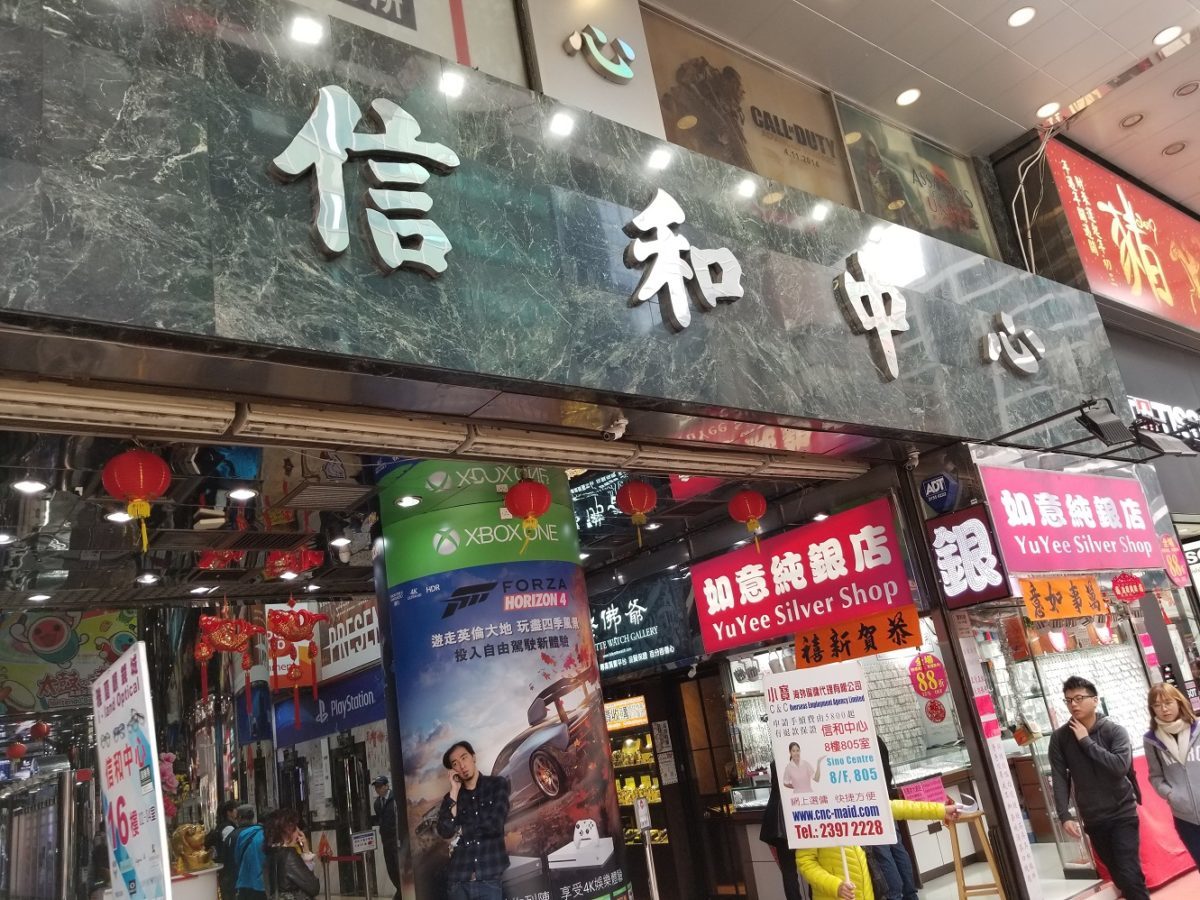
Whenever I visit Hong Kong and I’m in the mood to pick up a new wife (read: anime figure) or explore some new manga, or get a Japanese console game I know won’t be getting a western release, there’s only one place for me to go: The Sino Centre (sic, as they use old “re” spellings in this former British colony). Conveniently located in Mong Kok, dead center of the Kowloon Peninsula and at the confluence of two major metro lines, the Sino Centre has been the place to go for comics, games, and animation in Hong Kong for decades. Rising rents and demographic shifts mean the ground floor is now jewelry shops and there’s only one maid cafe to be found in the surrounding blocks, with the real fun stores pushed into the basement and upper mezzanine floors of the skyscraper named for the property developer turned super conglomerate that built it, but it’s still the place to go for all your otaku needs.
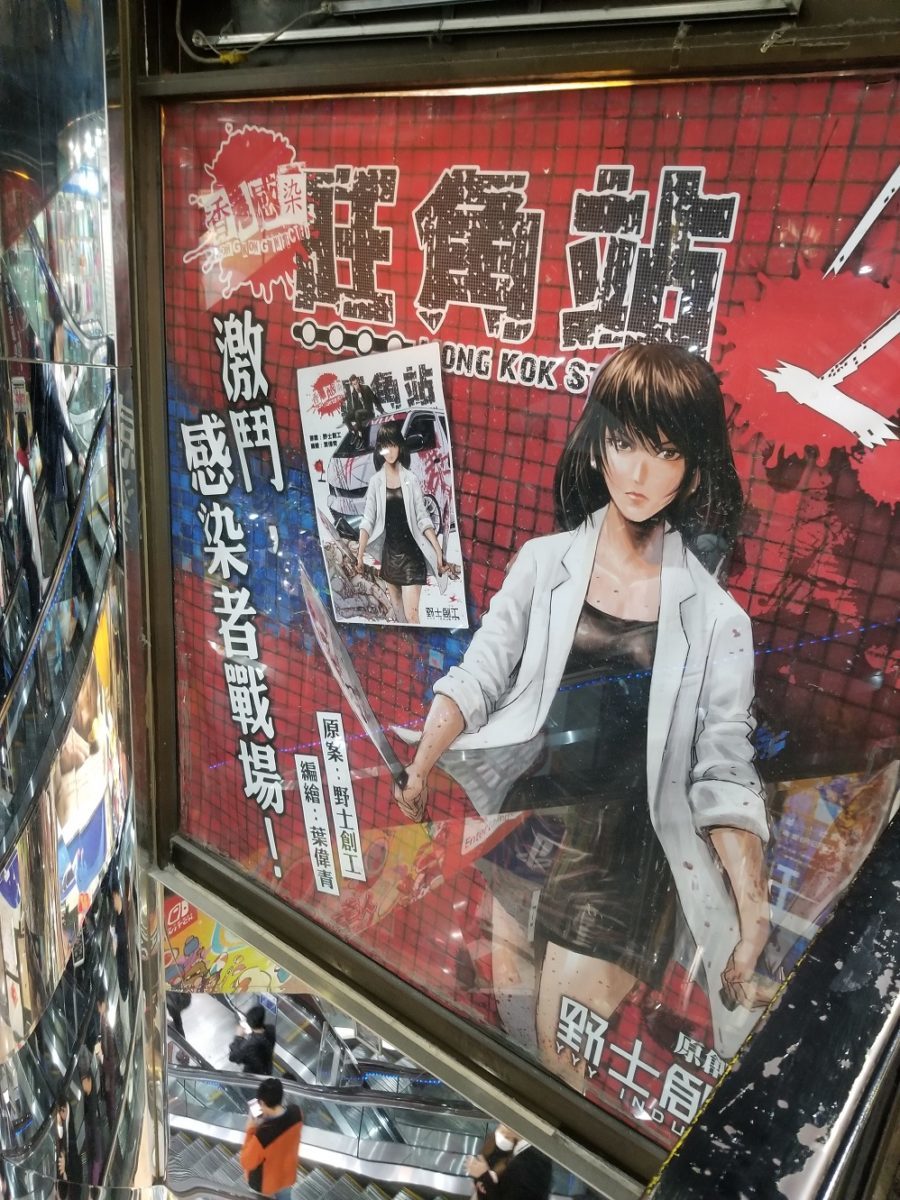
Riding the escalator up and away from gentrification, we’re welcomed by a man-sized advertisement for the latest installment of YYY Industry’s zombie comic series Hong Kong Infected. This is volume 2 of the Mong Kok Station story, named after the metro stop we just emerged from. It features art by up-and-coming illustrator Felix Ip. I was previously unfamiliar with the series, so this is a well-placed ad from my perspective.
Then we get into the shops selling the good stuff. There are some Hong Kong comics and media on offer, but the real main event is stuff imported from Japan. I’m personally a big fan of picking up manga monthlies that run my favorite series as a way of discovering fun new series and one-shots that run alongside them. Shops in the Sino Centre often import manga monthlies from Japan, but you can expect to pay about twice as much for them here as you would in a Japanese convenience store. It would be yet even more expensive to pay to ship from Japan on the heavy things though.
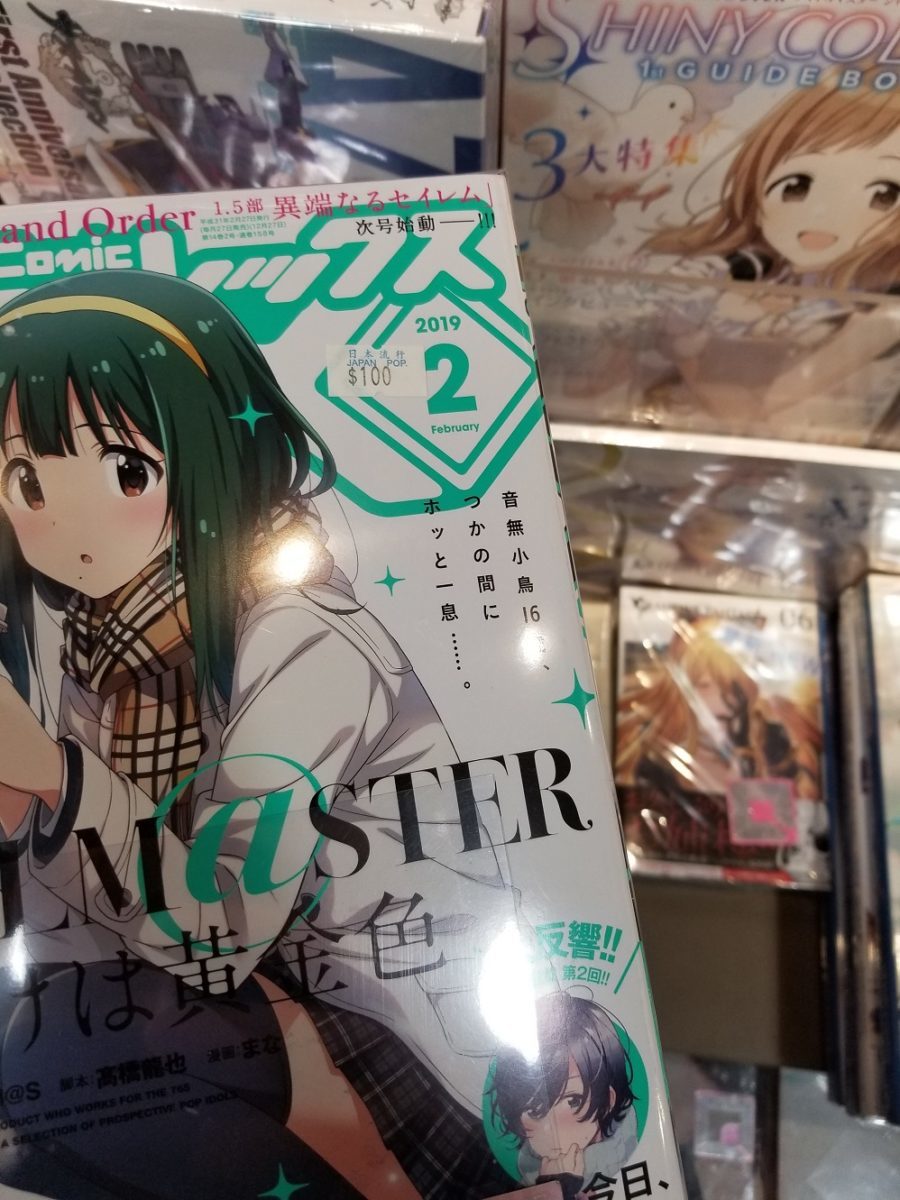
The shops also have a shockingly vast collection of manga volumes on offer in the tiny square footage the Sino Centre affords them. They’re all in Chinese translation, of course, but I still end up picking up a few books every time I visit. As a rule, mangas tend to be translated and published in Chinese much quicker and more regularly than they are in English, so you can often find very new material here. Interestingly, it’s extremely rare to find manga translated into the Simplified Chinese characters used in mainland China, where the Communist government’s censorship comes down pretty hard on violent and horny manga. Very few titles are translated specifically for the Hong Kong market, relatively small as it is, and so most publishing marks on the books are Taiwanese; often Taiwanese subsidiaries of Japanese publishers. Since Taiwan, Hong Kong, and Macau all use Traditional Chinese characters to read and write, it doesn’t matter that the spoken languages can differ quite a bit. It does not work both ways, though. As some Hong Kong comics, like Teddy Boy, have dialogue in Written Cantonese, a standardized written form of the vernacular not commonly used in formal writing, and often unintelligible to non-Cantonese-speaking Chinese. Japanese manga are almost always translated into Standard Written Chinese, though, which is understood by Chinese speakers around the world, regardless of what variety of Chinese they speak. Even manga shops in the Communist mainland will normally sell Traditional Chinese translations imported from Taiwan. That’s kind of a legal grey area.
But if you’re not looking to read, the Sino Centre also has several shops that sell live action JAV videos to those nerds still able to enjoy 3D. Every time I go back, I always have to make sure my favorite idiosyncrasy is still in place:
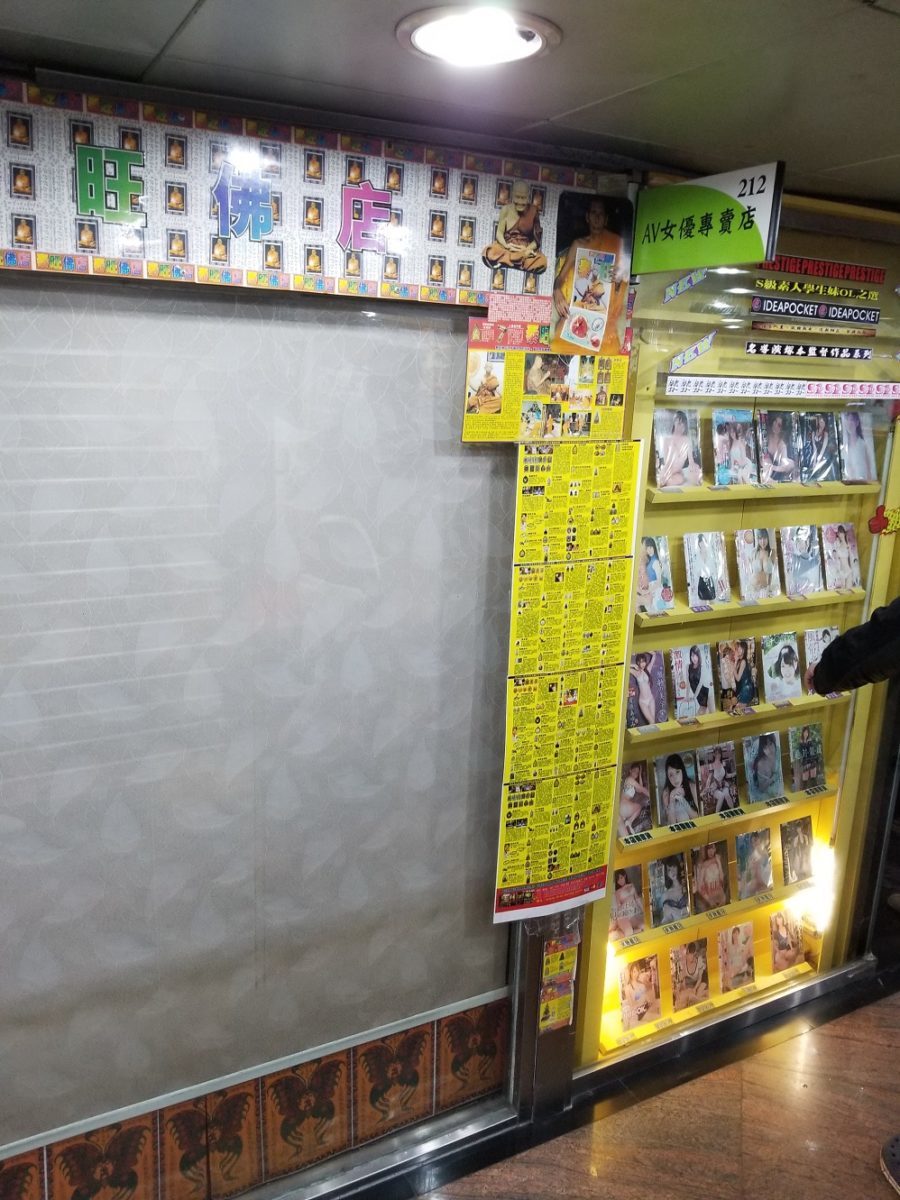
On the left is a shop that sells Buddhist talismans, idols, and other paraphernalia. On the right is a shop that sells JAV magazines and DVDs. These two shops have been in business right next to each other since at least 2010 when I first visited. I feel like the pamphlets featuring the monks and their accoutrements creep a little bit to the right, closer to the adult actresses every time I visit. But it’s probably just my imagination. In any case, it’s inspiring to see pornography and religion coexisting so successfully.
The real struggle with the Sino Centre, as it is with all things anime and manga, is to escape without spending too much money. I’ve found myself caught up in a shop selling event collectables that were not necessarily intended to be sold, and before I know it I’ve spent nearly HK $500. It’s just a good thing I don’t have space in my luggage for figurines.
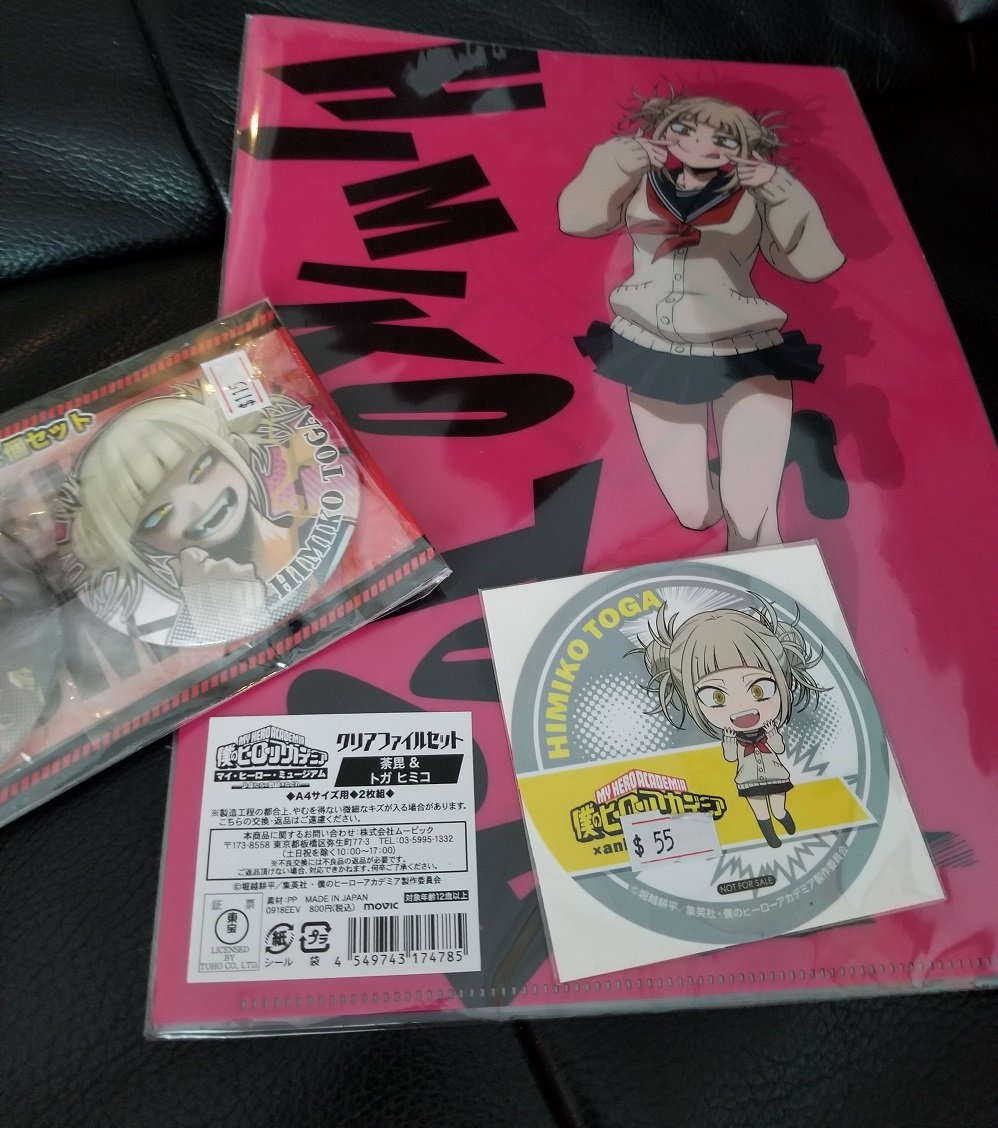
Have you been to the Sino Centre or one of Hong Kong’s other otaku culture centers? Or do you have a similar hub for such things in your city? My hometown in Nevada barely has a comic book shop, so I’m starved for this environment until I visit Asia.


